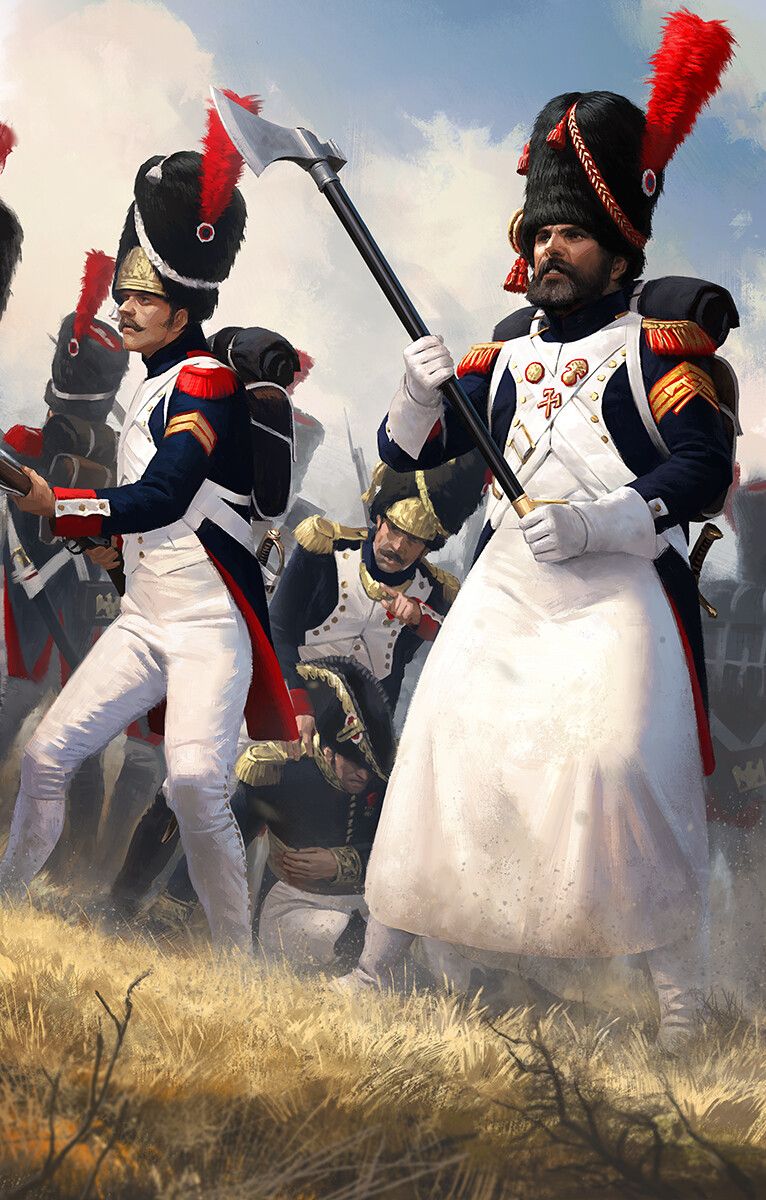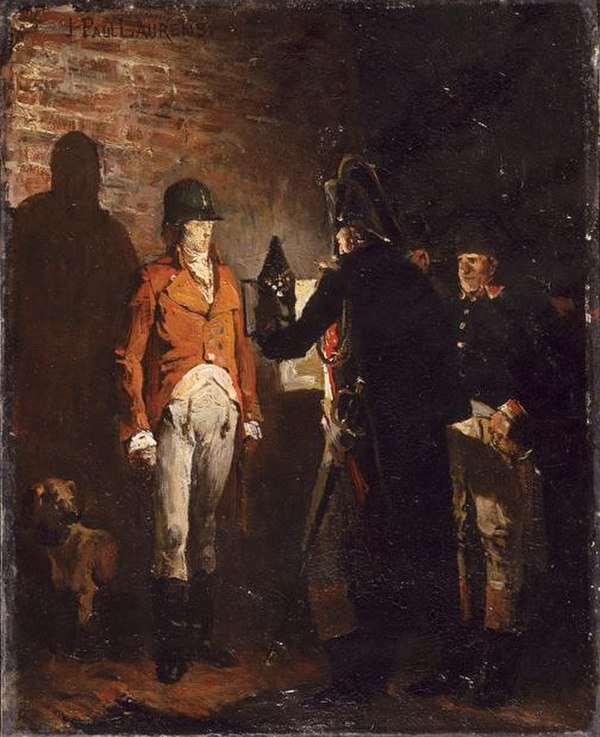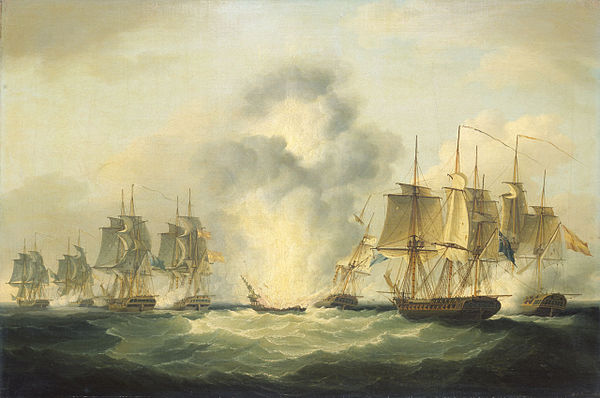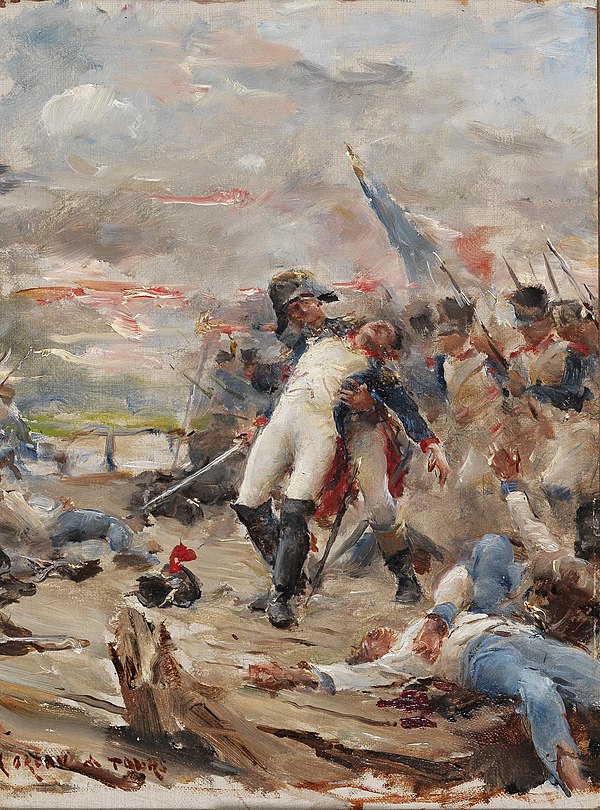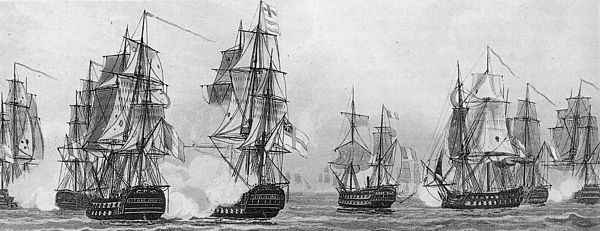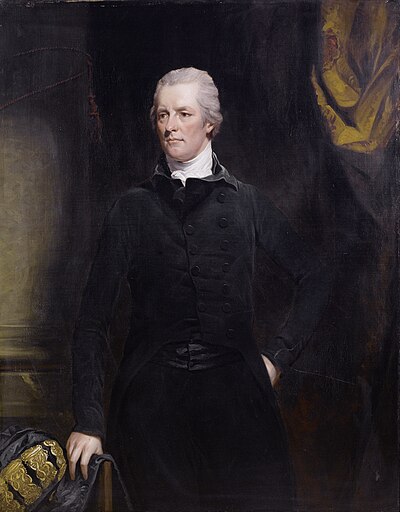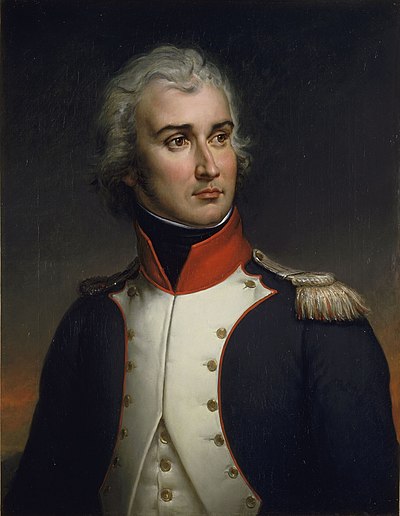The Grande Armée was formed in 1804 from the L'Armée des côtes de l'Océan (Army of the Ocean Coasts), a force of over 100,000 men that Napoleon had assembled for the proposed invasion of Britain. Napoleon later deployed the army in eastern Europe to eliminate the combined threat of Austria and Russia, which were part of the Third Coalition assembled against France. Thereafter, the name Grande Armée was used for the principal French Army deployed in the campaigns of 1805 and 1807, where it earned its prestige, and in 1812, 1813–14, and 1815. In practice, however, the term Grande Armée is used in English to refer to all the multinational forces gathered by Napoleon in his campaigns.
Upon its formation, the Grande Armée consisted of six corps under the command of Napoleon's marshals and senior generals. When the Austrian and Russian armies began preparations to invade France in late 1805, the Grande Armée was quickly ordered across the Rhine into southern Germany, leading to Napoleon's victories at Ulm and Austerlitz. The French army grew as Napoleon seized power across Europe, recruiting troops from occupied and allied nations; it reached its peak of one million men at the start of the Russian campaign in 1812, with the Grande Armée reaching its height of 413,000 French soldiers, who would take part in the invasion, with the total invasion force exceeding 600,000 men when including foreign recruits.
In addition to its size and multinational composition, the Grande Armée was known for its innovative formations, tactics, logistics, and communications. Unlike most armed forces at the time, it operated on a strictly meritocratic basis; while most contingents were commanded by French generals, except for the Polish and Austrian corps, most soldiers could climb the ranks regardless of class, wealth, or national origin.
